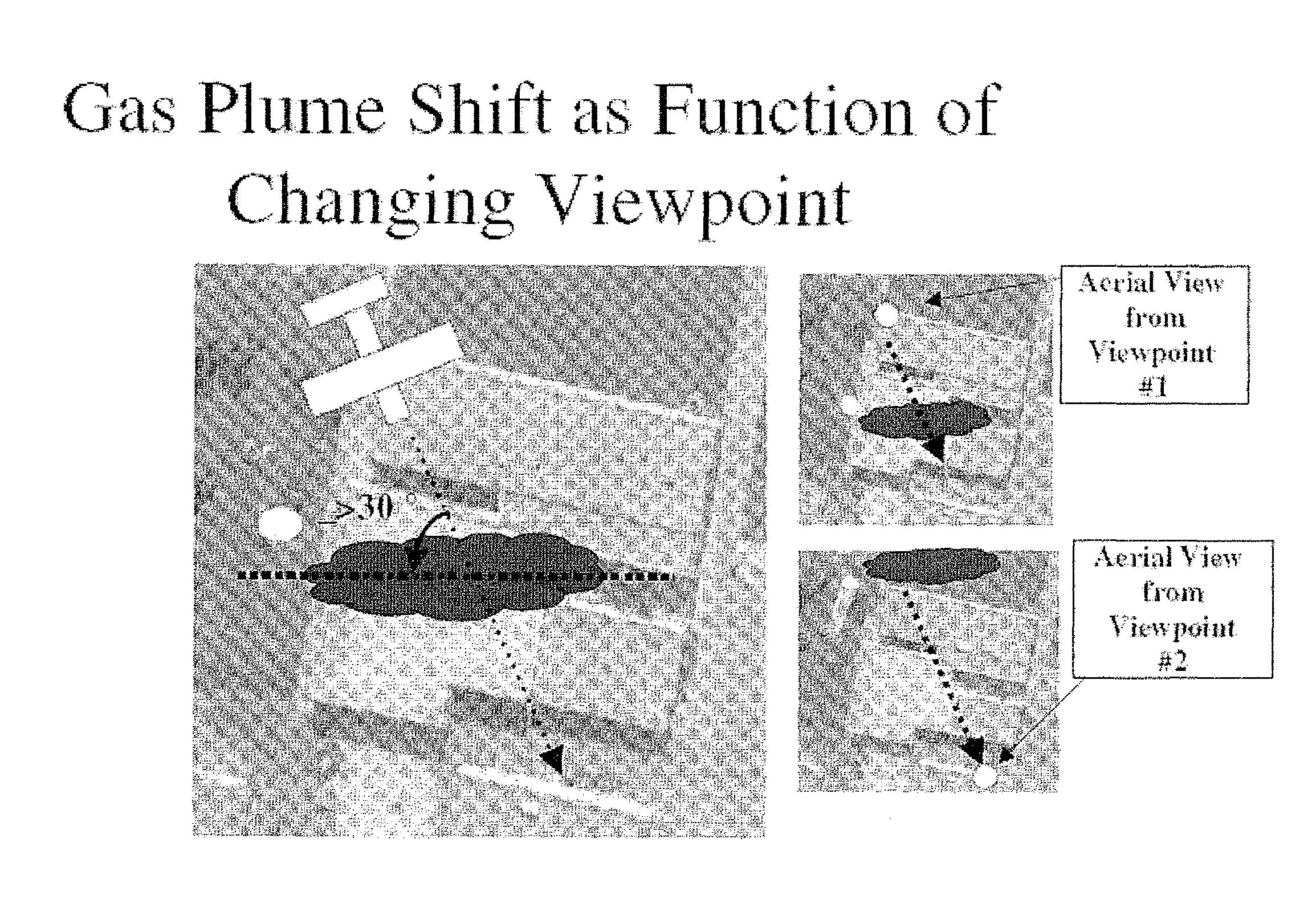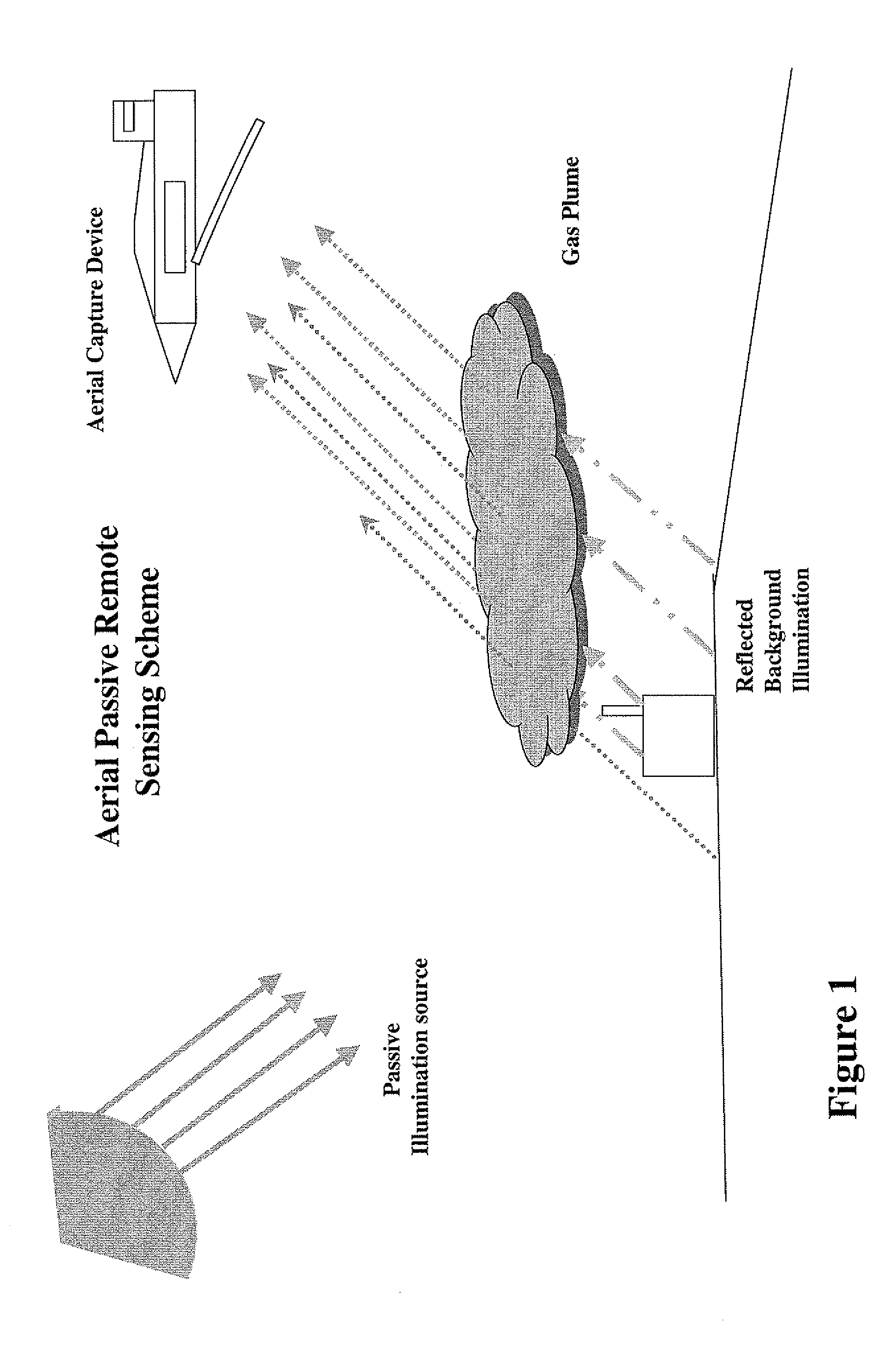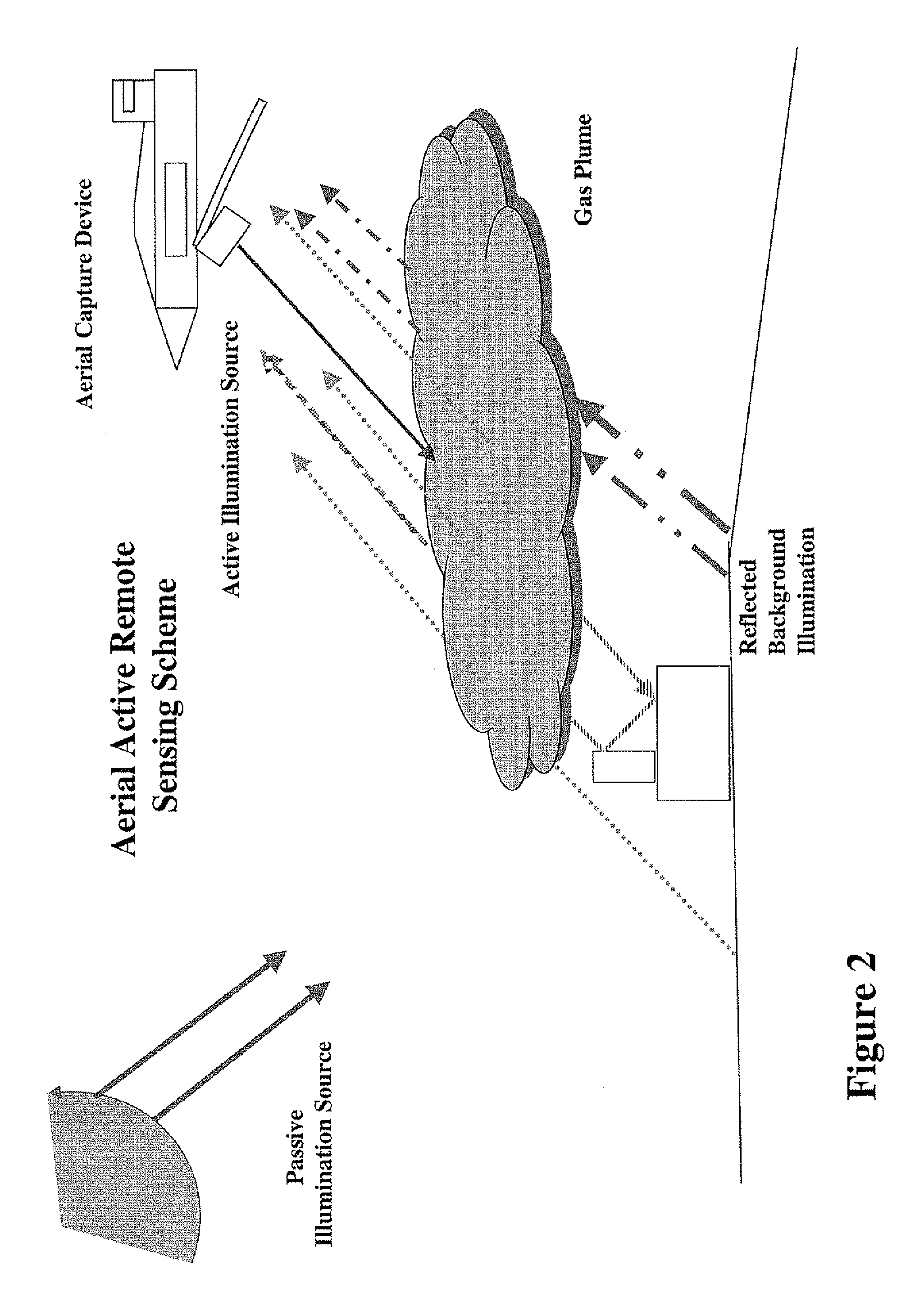Method for remote spectral analysis of gas plumes
a spectral analysis and gas plume technology, applied in the direction of material thermal analysis material analysis using sonic/ultrasonic/infrasonic waves, etc., can solve the problem of reducing the ability to accurately identify and quantify the target gas, and the unreliable method is often unavailable. problem
- Summary
- Abstract
- Description
- Claims
- Application Information
AI Technical Summary
Benefits of technology
Problems solved by technology
Method used
Image
Examples
Embodiment Construction
[0020]The principles and operation of the method according to the present invention may be better understood with reference to the drawings and the accompanying description.
[0021]The present invention, as mentioned above, is a method for remote sensing of the content of a gas plume based on data collected by a satellite, an aerial, or a ground-based imaging sensor, wherein spectral and radiance effects emanating from behind the gas plume are eliminated, or at least reduced. The invention is applicable, but not limited, to monitoring and identifying industrial pollutants, potential public hazards like natural gas leaks, and any other civilian and military applications in which gas plumes are usually released into the atmosphere from a height of at least five meters from the ground. In situations where the prevailing conditions permit, the current invention has application even when the plume is released from lower heights By way of overview, the current invention utilizes the paralla...
PUM
| Property | Measurement | Unit |
|---|---|---|
| height | aaaaa | aaaaa |
| angle | aaaaa | aaaaa |
| length | aaaaa | aaaaa |
Abstract
Description
Claims
Application Information
 Login to View More
Login to View More - R&D
- Intellectual Property
- Life Sciences
- Materials
- Tech Scout
- Unparalleled Data Quality
- Higher Quality Content
- 60% Fewer Hallucinations
Browse by: Latest US Patents, China's latest patents, Technical Efficacy Thesaurus, Application Domain, Technology Topic, Popular Technical Reports.
© 2025 PatSnap. All rights reserved.Legal|Privacy policy|Modern Slavery Act Transparency Statement|Sitemap|About US| Contact US: help@patsnap.com



